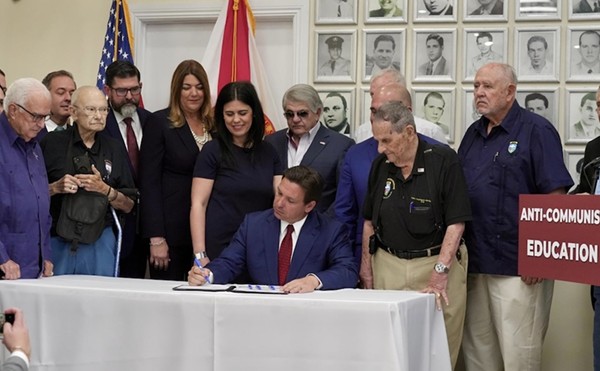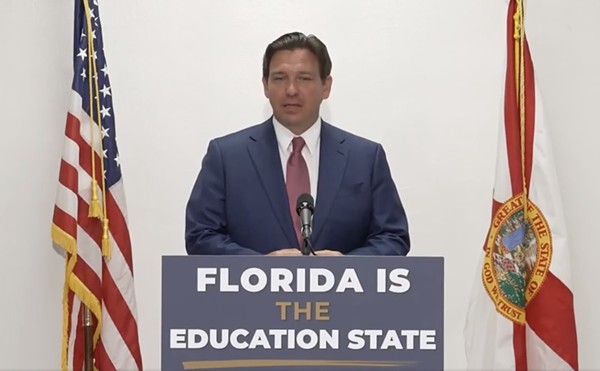Heard the latest buzz about cannabis? Word on the street is that today's pot is exponentially more powerful, and thus more dangerous, than the marijuana available some 20, or even 10, years ago.
The nation's drug czar says so. ("We're no longer talking about the drug of the 1960s and 1970s," John P. Walters recently warned Reuters; "this is Pot 2.0.") Law enforcement says so. (Speaking to the Associated Press in June, United States Drug Enforcement Agency special agent Mark R. Trouville, who heads the agency's Miami office, said, "This ain't your grandfather's or your father's marijuana. This will hurt you. This will addict you. This will kill you.") Pot dealers say so. (Advertising to your clientele that you sell only the most potent weed is an effective marketing tool.) Even most pot smokers say so. (Admit it. Who among you is going to tell your friends that you smoke schwag?)
Of course, just because people say something often enough doesn't make it so.
Truth is, much of the marijuana available on the market today — just as in past decades — is fairly low-strength, commercial-grade weed. But don't take our word for it. Read what the DEA has to say.
According to the agency's 2005 handbook, Drugs of Abuse (www.dea.gov/pubs/abuse/7-pot.htm), of the more than 4,600 domestic samples analyzed by the government between 1998 and 2002, fewer than 2 percent were found to contain THC levels above 20 percent. (THC, for those who don't speak acronym, is short for delta-9-tetrahydrocannabinol, the plant's chief psychoactive ingredient.)
A more blunt assessment comes from the U.S. National Drug Intelligence Center's 2007 National Drug Threat Assessment (www.usdoj.gov/ndic/pubs21/21137/marijuana.htm#Start), which states, "Most of the marijuana available in the domestic drug markets is lower potency commercial-grade marijuana."
Perhaps the most reliable source when it comes to the subject of marijuana potency is the University of Mississippi at Oxford, which has been randomly testing seized samples of cannabis for THC content for over two decades. According to the university, average pot potency has increased over the past decades to roughly 8 percent THC.
That said, there's nothing remotely or uniquely dangerous to health about consuming weed that's 8 percent THC.
Unlike alcohol — or even aspirin — today's pot still poses no risk of fatal overdose, regardless of its THC potency. In fact, any physician can prescribe a pill that's 100 percent THC and nobody at the drug czar's office seems to mind. Moreover, cannabis consumers readily distinguish between low and high-potency marijuana and moderate their use accordingly.
In addition, despite claims that marijuana alters the brain, it is important to note that THC — regardless of its potency — is surprisingly nontoxic to the adult, as well as the teenage, mind. Recently, scientists at New York's Nathan S. Kline Institute for Psychiatric Research reported in the Harm Reduction Journal that they could find "no … evidence of cerebral atrophy or loss of white matter integrity" attributable to cannabis use in the brains of frequent adolescent marijuana users (compared to non-using controls) after performing MRI scans and other advanced imaging technology. (Read the study here: www.harmreductionjournal.com/content/3/1/17.) Separate studies assessing the cognitive skills of long-term marijuana smokers have also reported no lingering deficits.
But what about the suggestion that today's pot is so strong that taking just one puff is a one-way ticket to drug rehab? Predictably, the devil is in the details.
Data from the federal Drug and Alcohol Services Information System confirms that more individuals are now enrolled in drug treatment for pot than ever before. However, this increase is a direct result of the fact that more Americans are being arrested for pot (nearly 800,000 at last count) than ever before. In fact, a new study published in June in the online journal BMC Public Health reports among the 27,000-plus adults entered into Texas drug treatment clinics between 2000 and 2005, a whopping 70 percent of them were diverted to treatment as a condition of sentencing, parole or probation. Faced with the choice of jail or attending drug treatment, most minor pot offenders — understandably — choose treatment, whether they need it or not.
So if today's pot is essentially the same plant it's always been — with any marginal increase in potency akin to the difference between a cup of tea and an espresso — why is the government claiming otherwise? Mainly to scare parents, particularly those millions of parents who may have, without incident, experimented with marijuana in the 1970s, when they were about the same age as their children are today. Fortunately for them, while the feds' latest "reefer rhetoric" may sound alarming, there's little substance behind the hype.
[email protected]


















